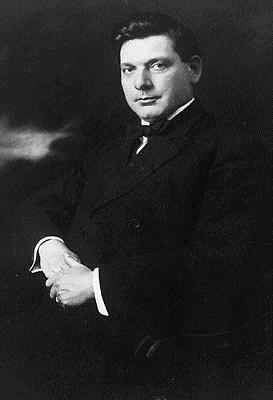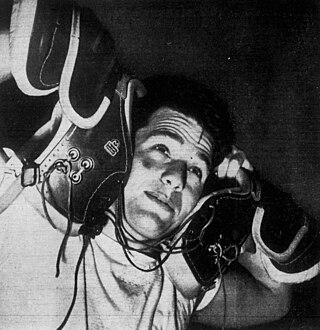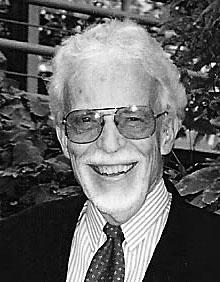
The Spanish Colonial Revival architecture, often known simply as Spanish Revival, is a term used to encompass a number of revivalist architectural styles based in both Spanish colonial architecture and Spanish architecture in general. These styles flourished throughout the Americas, especially in former Spanish colonies, from California to Argentina.
The year 1967 in architecture involved some significant architectural events and new buildings.

Irving John Gill, was an American architect, known professionally as Irving J. Gill. He did most of his work in Southern California, especially in San Diego and Los Angeles. He is considered a pioneer of the modern movement in architecture. Twelve of his buildings throughout Southern California are listed on the National Register of Historic Places, and many others are designated as historic by local governments.
SmithGroup is an international architectural, engineering and planning firm based in Detroit, Michigan. Established in 1853 by architect Sheldon Smith, SmithGroup is the longest continually operating architecture and engineering firm in the United States that is not a wholly owned subsidiary. The firm's name was changed to Field, Hinchman & Smith in 1903, and it was renamed Smith, Hinchman & Grylls in 1907. In 2000, the firm changed its name to SmithGroup. In 2011, the firm incorporated its sister firm, JJR, into its name, becoming SmithGroupJJR. As of August 1, 2018, the firm changed its name back to SmithGroup.

NBBJ is an American global architecture, planning and design firm with offices in Boston, Columbus, Hong Kong, London, Los Angeles, New York, Portland, Pune, San Francisco, Seattle, Shanghai, and Washington, D.C..
"America's Favorite Architecture" is a list of buildings and other structures identified as the most popular works of architecture in the United States.
Gluckman Tang Architects,, is a New York City–based architecture firm providing services in architecture, planning, and interior design. Established by Richard Gluckman in 1977, the firm focuses on a minimalist design approach.
Edward Hale Fickett, FAIA, was an American architect who was a consultant to federal and local governments in the United States and to President Dwight D. Eisenhower.
Gensler is a global design and architecture firm headquartered in San Francisco, California. It is the largest architecture firm in the world by revenue and number of architects.

Daniel Leonard Dworsky was an American architect who was a longstanding member of the American Institute of Architects College of Fellows. Among other works, Dworsky designed Crisler Arena, the basketball arena at the University of Michigan named for Dworsky's former football coach, Fritz Crisler. Other professional highlights include designing Drake Stadium at UCLA, the Federal Reserve Bank in Los Angeles and the Block M seating arrangement at Michigan Stadium. He is also known for a controversy with Frank Gehry over the Walt Disney Concert Hall.

Fentress Architects is an international design firm known for large-scale public architecture such as airports, museums, university buildings, convention centers, laboratories, and high-rise office towers. Some of the buildings for which the firm is best known include Denver International Airport (1995), the modernized Tom Bradley International Terminal at LAX (2013), the National Museum of the Marine Corps near Quantico, Virginia (2005), and the Green Square Complex in Raleigh, North Carolina (2012).
HED (formerly Harley Ellis Devereaux) is an architecture and engineering firm based in Royal Oak, Michigan with offices in Royal Oak, Chicago, Illinois, Los Angeles, Sacramento, California, San Diego, Denver, Colorado, Dallas, Texas, Boston, Massachusetts and San Francisco, California. The firm was founded in 1908 by architects Alvin E. Harley and Norman S. Atcheson.
DLR Group is an employee-owned integrated design firm providing architecture, engineering, planning, and interior design. Their brand promise is to elevate the human experience through design. A self-described advocate for sustainable design, the firm was an early adopter of the Architecture 2030 Challenge, and an initial signatory to the AIA 2030 Commitment and the China Accord.
Frank Harmon is a writer, architect, professor and public speaker in Raleigh, North Carolina.
LMN is an American architecture firm based in Seattle, Washington. The company was founded in 1979, and provides planning and design services to create convention centers, cultural arts venues, higher education facilities, commercial and mixed-use developments.
Esherick Homsey Dodge and Davis is a United States–based architecture, interiors, planning and urban design firm. EHDD is ranked among the top 20 architecture firms in the San Francisco Bay Area where it is headquartered.
Richard Smith Requa was an American architect, largely known for his work in San Diego, California. Requa was the Master Architect for the California Pacific International Exposition held in Balboa Park in 1935–36. He improved and extended many of the already existing buildings from the earlier Panama–California Exposition, as well as creating new facilities including the Old Globe Theatre.
Wallace Cunningham is an American architectural designer known for his residential work. He is president and principal designer at San Diego, California–based Wallace E. Cunningham, Inc.

Homer T. Delawie, FAIA, was an award-winning modernist architect working (primarily) in San Diego from the late 1950s to the 1990s. He designed numerous public, commercial, and residential projects, including the Bea Evenson Fountain in the Plaza de Panama, Balboa Park, the Coronado Library, the M. Larry Lawrence Jewish Community Center and expansion, the Scripps Miramar Ranch High School, the School of Creative & Performing Arts in South Bay, the San Diego Hospice, and projects for UC San Diego, the San Diego Zoo, San Diego State University, and Qualcomm.
Jack Allen Charney was an American mid-century architect who designed a number of significant buildings in various cities across California, including Los Angeles, Beverly Hills, San Francisco and Long Beach. His designs include the 32-story Sierra Towers in West Hollywood, from 1965.






